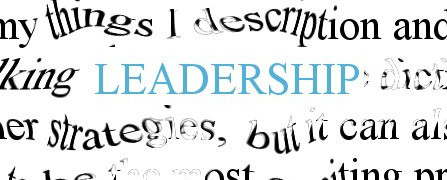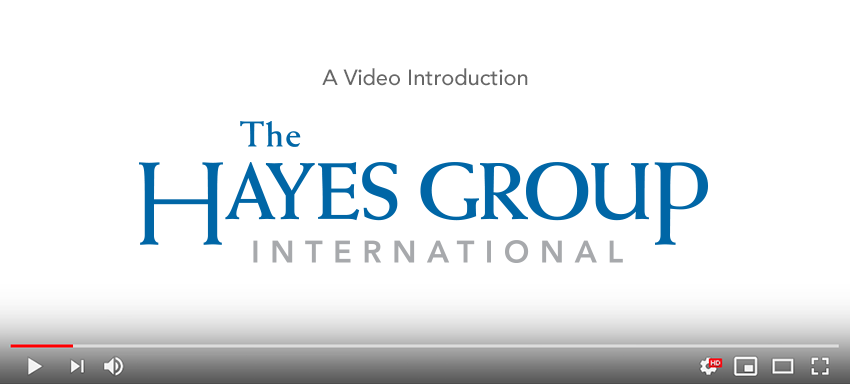Leadership for the Third Millennium

Leadership for the Third Millennium: A call for visionaries and influencers
The topic of leadership has become immensely popular in the past decade with multiple books, essays and research studies attempting to define the concept of leadership. Pulitzer Prize winner John Burns McGregor asked, “Is leadership simply innovation – cultural or political? Is it essentially inspiration? Mobilization of followers? Goal setting? Goal fulfillment? Is a leader a definer of values? Satisfier of needs?” His conclusion is “Leadership is one of the most observed and least understood phenomena on earth.” (McGregor, 1995).
Leadership Defined
The definitions of leadership can extend from more traditional ideas of power, authority and control to a more contemporary context of influencing, vision and moral leadership. Based on one’s background, experience, education and working relationships the definition of leadership may vary. My personal definition of leadership is: “Influencing followers toward achieving a common vision”.
This simple definition includes four basic elements: influence, followers, action (movement toward achievement) and vision. According to the well-known writer Charles Handy, “Influence, not authority, is what drives the political organization today in all organizations.” (Handy, p.8). I personally choose influence in my definition because, in my view, one really has no power over another. Some researchers argue that leaders exert power/authority and attempt to measure it on a scale (called the F scale) (Bass, 1990). Writings on expert power, referent power, reward power, coercive power and legitimate power indicate that leaders can use this authority to move people toward certain goals. However, in my view, people choose to follow and that in today’s society, leaders who accomplish goals must be able to influence others. In this context, anyone who has a circle of influence is a leader. Workers at the lowest level of the organization may be as effective or more effective in leadership than positional authority at higher levels. Ken Blanchard talks about this concept in his article “Turning the Organizational Pyramid Upside Down”, when he says ” The leader of the future, realizing that vision and implementation are both leadership roles, will learn to care little about defending the traditional hierarchy. As a result, she or he will be willing to turn the pyramid upside down to implement a vision.” (Blanchard, p. 85).
Leadership implies followers. Followers adhere to the views and vision of the leader through leadership. However, leaders are also followers in their own right. Douglas Smith writes, “In the twenty-first century organization, all leaders must learn to follow if they are to successfully lead.” (Smith, p. 199). What is meant by this assumption is that leaders must rely on the capacities and insights of all people to understand the changing aspects of the modern organization. (Smith, 1996). Global business issues have become so complex that decision-making cannot be effectively centered at the top (Steere, 1996). My definition includes followers but also embraces the paradox of leaders as followers within organizations.
Another important part of the definition of a leader includes a move to action resulting in some sort of achievement. A leader can influence followers but effective leaders will move followers to common goals or results. Leadership practitioner Kouzes puts it this way: “It’s hard to get anybody excited just about vision. You must show something happening.” (Kouzes & Posner, p. 99).
According to a research study conducted by Mayes, a leader’s need for achievement affects subordinates job performances, and leaders with a high need for achievement and action obtain better performance from their subordinates (Bass, 1990). Influence and followers are important ingredients to a leadership definition; however, some type of achievement or action also must take place. To guide that action, leadership should be driven by a common vision or view of the future.
A clearly defined vision of the future is essential for effective leadership. James Kouzes, from the Tom Peters Group, states that leaders must be forward thinking, using their capacity to “paint an uplifting and ennobling picture of the future.” This ability is what differentiates leaders from other credible sources (Kouzes & Posner, 1996). Vision, imagination and foresight are closely linked to intuition. In a research study with 200 managers, top-level managers indicated they were more likely to depend on intuition than lower level managers (Bass, 1990). In my view, intuition and foresight help to develop and communicate a vision for the future that can assist in “rallying the troops” around a common cause.
Third Millennium Leadership: Function, role and meaning
The function of leadership in the 21st Century is to provide a clear future vision, implement the vision using a strong values-based approach and to guide/influence followers using a humanistic approach to motivation.
Some may argue that in a postmodern world, leadership has less relevance than in previous generations. Since more people construct their own realities and view the world from various perspectives, the view of leadership is unique to that person; therefore its effectiveness is outdated. I would argue that although postmodern society may view leadership from differing unique perspectives, the need for leadership is even more pronounced in today’s world.
Increasing globalization, new competitive challenges, the accelerating rate of technology and the impact of regulation and deregulation, create an increased need for stability and for future security.
Huseman and Hayes argue in their book, Give to Get Leadership, that in today’s world the old workplace contract is dead. No longer do Generation Xer’s believe the admonition that if you work hard and take care of the company, the company will take care of you (Huseman & Hayes, 2002). If there is a need for security but security has vanished, where will this stability and future security be found? This security will not be in permanent jobs, but the security can be through a clearly communicated vision of the future that includes a role for followers. Charles Handy states that the virtual workplace of the future will typically involve 20 percent of the people being employed full-time – others will be suppliers or contractors, part-timers or self-employed professionals (Handy, 1996).
Leadership is very different in a liberated work force that is not promised life long employment and where workers are self-contractors to business (Noer, 1996). People need a common vision to rally around and look for role models who will serve as “pathfinders” (Covey, 1996), combining vision and values to communicate a strategic direction.
In addition to the function of providing strong and consistent vision, I believe effective influencers provide value guidance, and the primary role of 21st century leaders is to provide value influence and a common vision based on value-based concepts. In this context, value leadership is defined on basic philosophical concepts such as trust, respect, and meeting the needs, wants, and aspirations of followers (O’Toole, 1996). Great leaders like Lincoln and Gandhi used “idealized images of a better tomorrow based on fundamental moral principles and universal values” (O’Toole, p. x). However, many leaders are convinced that they must create strong, shared corporate values to unite their decentralized operations, but feel this is almost impossible given a world characterized by pluralism, diversity, and a myriad of other fragmenting forces (O’Toole, 1996). I strongly believe that a leader should clarify his or her basic values, and followers will align with that leader based on those values. Values may change from person to person but followers can determine if their values aligned with the leaders’ values and can clearly see if their values would not “fit” into the basic organization that espouses those values. In the midst of recent accounting scandals, the clarity of these values is a primary function for 21st Century leaders.
The third function of leadership in the 21st century is guidance – this ties to the action step of the above definition. Followers’ expectations about what they may accomplish can be increased if their leader shows them how to obtain resources that will enable them to reach their goals (Bass, 1990). This guidance should be given from a humanist approach versus a Machiavellian approach. Good leaders set direction, clearly communicate parameters and then become hands off.
In today’s society, leaders must both think and do, both manage others and themselves and both make decisions and do real work (Smith, 1996). As part of this guidance, followers must realize that the leaders’ basic core values do not change. They must know that they can rely on what is said, trust their leaders to make the best decisions and believe the leader is working in the followers’ best interest. The strategies may change as well as the leader’s approach, but the basic values that leaders use to guide followers remain constant.
All of the basic functions of third millennium leaders are closely related. Vision is based on values. Guidance requires a vision to allow workers to achieve higher goals. Researchers Kouzes and Posner emphasize this close link when they state: “Enabling and encouraging others to act and showing the way requires inspiring a shared vision.” (Bass, p. 214). Effective third millennium leaders must realize this interrelatedness and envision the big picture of how vision, values and guidance work hand in hand to positively affect followers and to achieve results.
Third Millennium Leadership: Challenges
If one defines leadership as a combination of influence, action, and vision, the 21st century will require leaders to put away many of the leadership “trappings” of the 20th century. Leaders will need to become more inspirational – espousing a common vision. They will need to become more guiding and less directing – allowing followers to think, act, and produce themselves but within the vision parameters. They will have to become more humanistic in their approach – developing values of trust, respect, service and selflessness with followers. In my work with multiple global corporations I believe this transition is already starting in many industries. However at this point, the concepts may be more talked about and read about in recent literature, rather than put into practice, but as the modern workforce changes from baby-boomers to baby-busters and Generation X, these concepts will become paramount to successful leadership and organization effectiveness.
Author
Michael D. Comer, D.M.

Mike is President of The Hayes Group International, Inc. He has over 30 years consulting experience with Fortune 500 companies, government agencies, non-profits as well as smaller organizations in organizational and team development, leadership assessment and development (executive coaching), and training development and delivery. In his role as President he oversees the work of 28 senior-level consultants. Mike started his career at Andersen Consulting (Accenture)… Read more »

